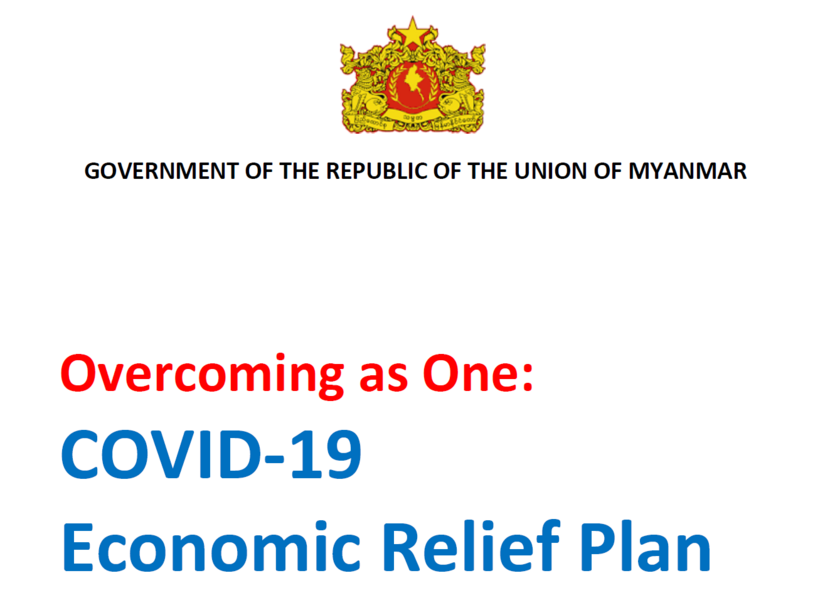Myanmar: Overview Covid-19 Response
After the World Health Organization WHO declared the Covid-19 outbreak a global pandemic on 11 March, the Myanmar Government scaled up its measures and on 13 March, it elevated its Committee for Prevention, Containment and Treatment to the national level in order to control and limit the risks for the 54 million Myanmar population.

A number of precautionary public restrictions followed which came into effect from 13 March until 30 April, followed with extension until 15 May. Myanmar’s Department of Civil Aviation also announced the suspension of all international commercial flights effective until 15 May.
The latest announcement came out this week on 13 May that the precautionary measures are further extended including the suspension of commercial flights from 15 to 31 May.
On the other hand, some measures concerning the business operations have been gradually relaxed. Here’s a situation update in brief about the effects on the overall economy, agriculture sector and the development of the work plan for Myanmar’s economic relief.
Business Operations
From April 20-30, a joint inspection period for factories was set by the Ministry of Labour, Immigration and Population and the Ministry of Health and Sports. The workplace safety and health inspection was done in accordance with the prevention of Covid-19 guidelines for the factories instructed by the Ministry of Health and Sports. Reopening is allowed after passing the inspection, with a priority given to pharmaceuticals and food manufacturing factories. See the announcement in details. On 3 May, Myanmar classified in total 21 businesses as essential to continue operations. The list included port services, warehousing and wholesales, export and import and the fisheries sector.
After a closure for more than 2 months, Myanmar’s commercial capital city Yangon and its second largest city Mandalay are now set for a gradual reopening of shops, restaurants and markets towards the end of May in line with the requirements by the Ministry of Health and Sports.
Impacts are inevitable
All restrictions together clearly have negative impacts on businesses and socio-economic sectors, including international trade (border, air and maritime). Myanmar’s economic growth in 2020 shows a sharp downturn, from an estimate of 6.4% to just 1.8% according to the International Monetary Fund.
Myanmar’s agriculture sector is also at high risks, with fears for reduced food production, triggered by reduced access to finance, services and inputs like seeds and fertilizers, expectations of lower sales, complicated logistics to markets and consumers with domestic lock-downs at from international, national to regional and townships level.
Food and especially nutrition security is clearly a concern if farmers are unable to raise money and cannot start sowing for new crops timely before the monsoon season. The growing season for monsoon paddy, vegetables and other agriculture activities in Myanmar normally start in May. See the news article for more details.
To support farmers, the Ministry of Planning, Finance and Industry announced on 5 May that monsoon agriculture loans by the Myanmar Agriculture Bank will start on 15 May, the loan rate is at 150,000 MMK (appr. 98€ ) per acre (0.4 ha). The interest rate has also been reduced from 8% to 5% per annum.
In addition, Myanmar’s fisheries sector is reportedly hit hard with a sharp drop in international orders from the neighboring countries and the EU. The Myanmar Fisheries Products Processors and Exporters Association MPEA is projecting the largest loss in the sector export revenue in history for a six month period between March to August.
Meanwhile, The Integrated Seed Sector Development Myanmar program (ISSD-M) conducted an online survey ‘Covid-19 Quick Seed Scan’ with seed sector stakeholders to access the constraints in functioning and implications throughout the supply chain. The survey was carried out in the period April 20-30 in collaboration with the Seed Division of the Department of Agriculture, Myanmar and the Wageningen Centre for Development Innovation, Wageningen University and Research (WUR-CDI). As a result, four main alert areas have been identified 1) mobility of farmers and seed entrepreneurs 2) Seed affordability for farmers 3) Seed production operations 4) early generation seed supply. In the 2nd week of May, ISSD-M organized an online focus group discussion to follow up on the survey findings. Private seed companies, farmer representatives, development partners, NGOs and government discussed the alert areas in details with a focus on the action planning. See the indications and result summary . As soon as these actions are further discussed with the Myanmar governments and planned in more concrete details, we will report on them.
Economic Relief Plan
To bounce back the inevitable effects on the country overall economy, the Government of Myanmar has established a national Committee for Remedying Economic Effects Covid-19. Myanmar Investment Commission MIC further approved 37 more investments amidst the crisis within the period from end March until early May. On 27 April Myanmar released the Covid-19 Economic Relief Plan (CERP), outlining the 7 goals, 10 strategies, 36 action plans and 76 measures. CERP is attached for your reference.
Specific actions mentioned in CERP for the agriculture sector are cash and lending support for planting and retention, total 100billion MMK (appr. €65million). The target groups are farmers, small agri-processors, agribusinesses and seed farmers. The agriculture loans for farmers have been reduced from 7% to 5%.
The overall CERP covers a broad range of sectors and the implementation cost is estimated USD 2 billion, according to the Ministry of Planning, Finance and Industry. Myanmar will receive international aid and financing support from a combination of public finances, Central Bank finances and from the World Bank to implement CERP. The measures will be partly financed by means of cutting the 2019-20 budget of the Government ministries, each up to 10%.
In the coming weeks, it is expected to see a plan to relax the restrictions by the Government for business continuity and further detailing of CERP is expected to better implement the proposed action plans and measures. We will report more on the latest information and the impacts on the agriculture sector in the next article.